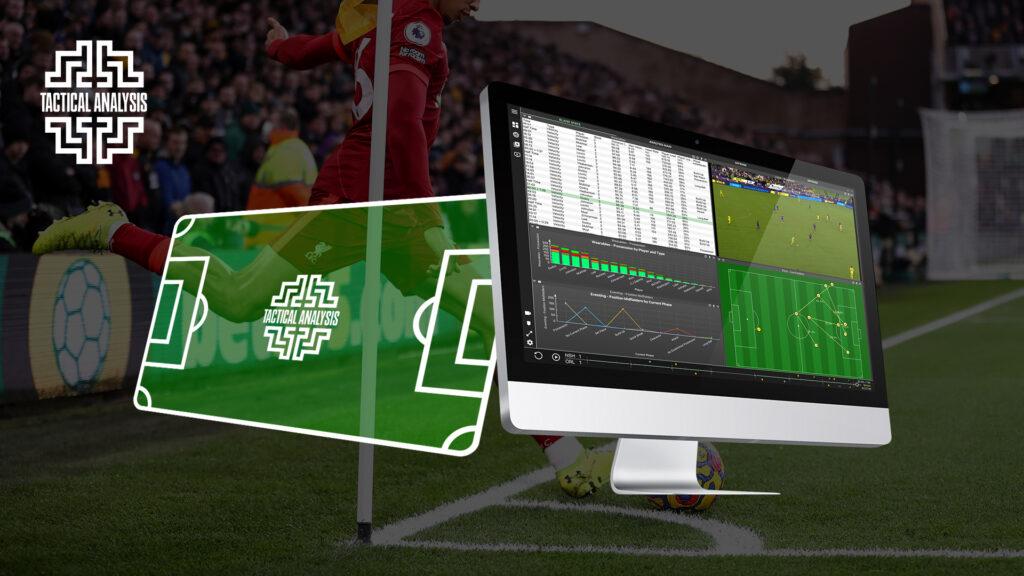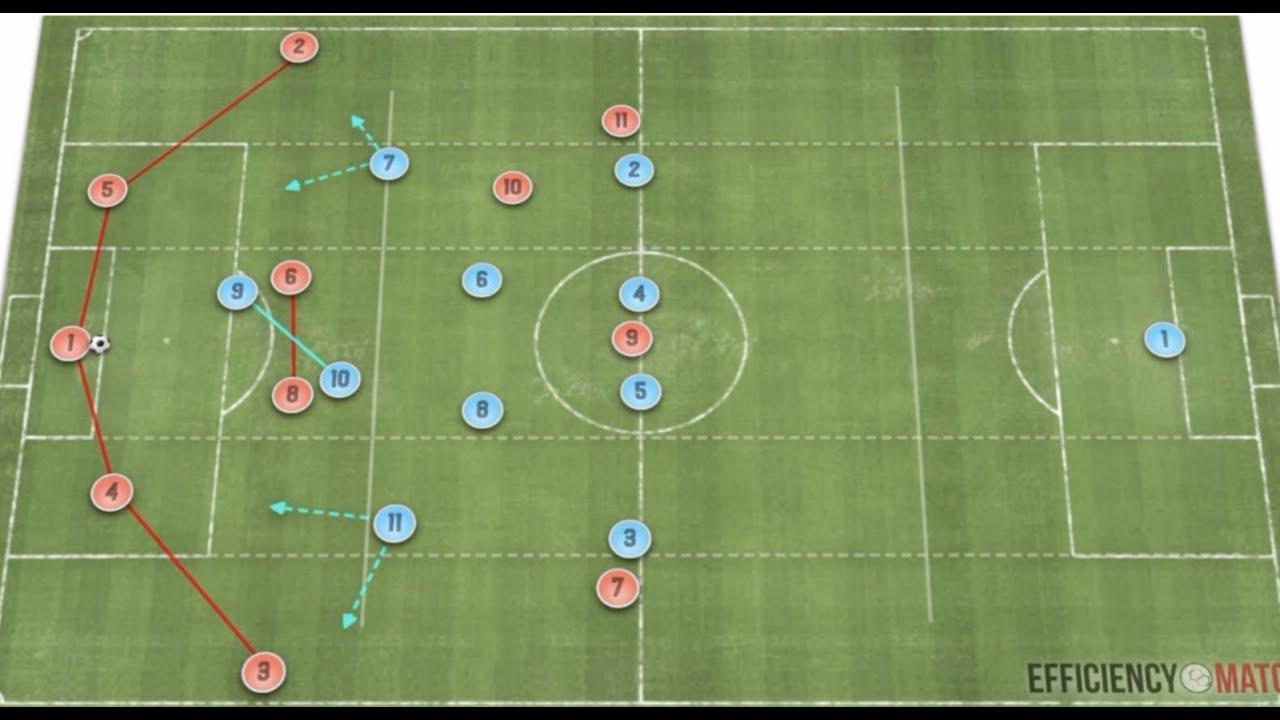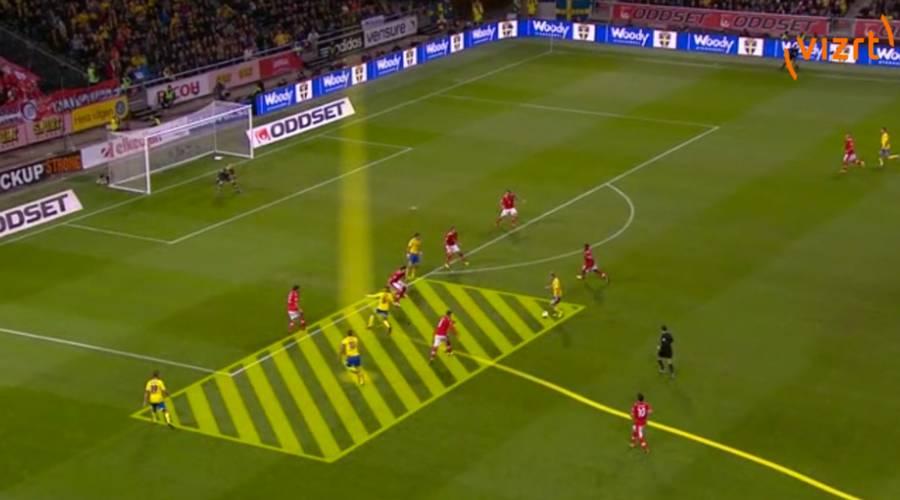Title: Decoding the Beautiful Game: A Guide to Analyzing Soccer Matches
Soccer, often dubbed the beautiful game, is more than just a sport; it’s a tapestry woven with strategy, skill, and passion. Each match unfolds like a complex narrative, filled with twists, turns, and pivotal moments that can define a team’s fate. As fans and analysts alike immerse themselves in the thrill of competition, the desire to understand the underlying dynamics of the game grows ever stronger. But how does one peel back the layers of strategy to reveal the intricate patterns of play? In this article, we will explore the essential techniques and tools for analyzing soccer games, enabling you to appreciate the nuances that make this sport so captivating. Whether you’re a budding coach, a dedicated fan, or a curious newcomer, this guide will equip you with the insights needed to watch the game with fresh eyes and deeper understanding. Join us as we embark on a journey into the heart of soccer analysis, where every pass, tackle, and goal becomes a story waiting to be told.
Table of Contents
- Understanding Match Dynamics through Tactical Analysis
- Decoding Player Performance: Metrics and Indicators
- Utilizing Data Visualization to Enhance Game Insights
- The Importance of Context: Analyzing Opponent Strategies and Conditions
- Q&A
- Final Thoughts

Understanding Match Dynamics through Tactical Analysis
Analyzing match dynamics requires a keen eye for tactical movements, positioning, and decision-making under pressure. This involves observing how players interact with each other and the opponent, shifting formations seamlessly. A successful tactical analysis breaks down key moments in games, highlighting formation adjustments, player positioning, and transition phases. Utilizing video analysis tools can enhance this process, offering the ability to review specific plays and assess player contributions. Consider the following aspects when conducting your analysis:
- Formation Utilization: How do formations adapt against different opponents?
- Player Roles: Are players fulfilling their assigned roles effectively?
- Pressing Strategies: What pressing tactics are implemented, and how successful are they?
- Counterattacks: How quickly can a team transition from defense to offense?
Additionally, establishing a framework for your analysis can streamline your findings. A simple table can encapsulate each team’s strengths and weaknesses, assisting in making informed conclusions about overall match tactics:
| Team | Strengths | Weaknesses |
|---|---|---|
| Team A | Fast transitions, strong wing play | Vulnerability in central defense |
| Team B | Solid midfield control, disciplined defending | Lack of creativity in attack |
By focusing on these areas during a match, analysts can gain a comprehensive understanding of how tactical choices shape gameplay. Access in-depth analysis and strategies at BetReward for further insights into advanced tactical breakdowns.

Decoding Player Performance: Metrics and Indicators
Understanding player performance in soccer goes beyond mere goal tallies and assists. To truly assess a player’s impact on the game, analysts utilize a variety of metrics that reflect different aspects of play. Important performance indicators include:
- Pass Completion Rate: Measures accuracy and effectiveness in maintaining possession.
- Defensive Contributions: Metrics like tackles, interceptions, and clearances provide insight into a player’s defensive abilities.
- Expected Goals (xG): An advanced metric that quantifies the quality of scoring chances a player creates or attempts.
- Dribbles Completed: Indicates a player’s ability to navigate past defenders and create scoring opportunities.
By analyzing these metrics together, coaches and analysts can identify which players consistently perform well in critical situations. Furthermore, a comprehensive performance review can involve positional heatmaps and passing networks, revealing players’ spatial positions and their involvement in build-up play. For example, a table summarizing player contributions might look like this:
| Player | Pass Completion Rate | xG Contribution | Tackles per Game |
|---|---|---|---|
| Player A | 85% | 0.7 | 1.5 |
| Player B | 78% | 0.4 | 2.0 |
| Player C | 90% | 1.1 | 1.2 |
These indicators not only highlight individual performances but also help teams strategize more effectively, maximizing the strengths of their lineup. For further insights into betting trends and performance metrics, explore BetReward.

Utilizing Data Visualization to Enhance Game Insights
Data visualization transforms raw statistics into comprehensible stories, helping analysts and fans alike extract valuable insights from soccer games. By representing data through visuals like heat maps, bar graphs, and scatter plots, one can quickly identify trends and patterns that might be overlooked in spreadsheets. For instance, a heat map can illustrate a player’s movement on the field, revealing their areas of impact and influence during the match. This allows coaches to assess tactical approaches and make informed adjustments in real-time, enhancing overall performance.
Furthermore, interactive dashboards can synthesize various metrics, such as possession percentages, passing accuracy, and player ratings, facilitating deeper analysis. Key benefits include:
- Enhanced Decision-Making: Visual reps help coaches and players make quicker, evidence-based decisions.
- Performance Tracking: Monitoring individual and team performances over time becomes easy with visual aids.
- Fan Engagement: Dynamic graphics attract fans, increasing their involvement and understanding of the game.
For example, a
| Player | Goals | Assists | Passing Accuracy (%) |
|---|---|---|---|
| Player A | 10 | 5 | 87 |
| Player B | 8 | 7 | 90 |
helps in visualizing performance stats, making it clear who has the most impact on game outcomes. By effectively utilizing such data visualization techniques, analysts can drive their insights home, paving the way for enhanced strategies and gameplay within the soccer domain. For more comprehensive insights, visit BetReward.

The Importance of Context: Analyzing Opponent Strategies and Conditions
Understanding the multifaceted nature of soccer games requires an examination of the various elements that shape each match. Analyzing opponent strategies is pivotal, as teams often modify their playstyle based on the characteristics of their competitors. For instance, a high-pressing team will aim to exploit defensive weaknesses, while a more conservative opponent may focus on a solid backline. When assessing these strategies, consider the following factors:
- Historical Performance: Review past matchups to spot patterns in behavior.
- Player Form: Analyze individual player statistics to gauge strengths and weaknesses.
- Tactical Flexibility: Observe how a team adapts during the game based on the flow of play.
Equally, the conditions under which a match is played can significantly influence its outcome. Weather, field conditions, and even the psychological state of the players come into play. A rainy pitch can slow down a primarily offensive squad, whereas a solid, dry field can highlight the abilities of technical players. Be sure to account for:
- Weather Impact: Examine how conditions may affect ball control and stamina.
- Hostile Environment: A loud crowd can affect player concentration, benefiting the home team.
- Injury Reports: The absence of key players can alter a team’s strategy and performance.
By systematically analyzing opponent strategies and game conditions, analysts can provide insights that enhance understanding and predict match outcomes more accurately.
| Condition | Potential Impact |
|---|---|
| Rainy Weather | Slower play, increased turnovers |
| Home Advantage | Boosted team morale, higher energy levels |
| Injured Key Players | Reduced effectiveness, tactical adjustments |
Q&A
Q&A: How to Analyze Soccer Games
Q1: Why is analyzing soccer games important?
A1: Analyzing soccer games is essential for understanding tactics, player performance, and team dynamics. It offers insights that can enhance our appreciation of the sport, inform coaching strategies, and help fans engage more deeply with their favorite teams.
Q2: What are the key aspects to focus on when analyzing a match?
A2: There are several vital elements to consider, including:
- Tactics: Observing formations and strategies employed by each team.
- Player Performance: Evaluating individual contributions, including passing accuracy, defensive actions, and goal-scoring opportunities.
- Possession and Offense: Understanding how teams manage possession and create goal-scoring chances.
- Defensive Structure: Analyzing how teams defend against attacks and maintain their shape.
Q3: How can one assess a team’s tactical approach during a game?
A3: To assess a team’s tactical approach, watch for their formation and changes throughout the game. Note how they react during different phases of play—whether they press high when out of possession or sit back and defend. Additionally, consider the roles of specific players and how their positions affect team performance.
Q4: What tools or resources are available for analyzing soccer games?
A4: A variety of tools can aid in soccer analysis, including:
- Video Analysis Software: Programs like Hudl or Wyscout for breaking down match footage.
- Statistical Websites: Platforms like Opta and Whoscored offer detailed match statistics and player ratings.
- Tactical Boards: Used by coaches to visualize formations and strategies post-match.
Q5: How does player statistics contribute to game analysis?
A5: Player statistics provide quantifiable data that can support subjective observations. Metrics like passing completion rates, number of tackles, or shots on target help to paint a clearer picture of a player’s effectiveness and influence in a match.
Q6: What common mistakes should one avoid when analyzing games?
A6: A few common pitfalls include:
- Overlooking Context: Failing to consider the match conditions, such as weather, rivalries, or injuries that might affect performance.
- Being Biased: Allowing personal favoritism for teams or players to cloud objective analysis.
- Ignoring Patterns: Focusing solely on the present match without recognizing recurring themes over time can limit understanding.
Q7: Can fan opinions be useful in the analysis of matches?
A7: Absolutely! Fan opinions can provide diverse perspectives, revealing trends in popularity, common criticisms, or praises that statistics alone might not show. Engaging with different viewpoints can broaden your understanding of the game and enrich the analysis process.
Q8: How can I practice my analytical skills further?
A8: To enhance your analytical skills, consider these approaches:
- Watch Replays with Intent: Choose a game to rewatch, focusing on specific elements like team formations or a particular player’s movement.
- Join Discussion Forums: Engage in conversations with other soccer enthusiasts who share analysis and critique.
- Write Match Reports: After watching a game, write your own analysis to solidify your observations and improve your articulation of thoughts.
Q9: How can analysis influence coaching in soccer?
A9: Analysis informs coaching decisions by providing empirical evidence about what works and what doesn’t. It allows coaches to adjust tactics based on opponent strengths and weaknesses, improve player development through feedback, and ultimately enhance team performance.
Q10: What’s the most rewarding part of analyzing soccer games?
A10: The most rewarding aspect of analyzing soccer games is the deepened understanding and appreciation of the sport. Seeing beyond the surface to uncover patterns, strengths, and weaknesses provides a fulfilling experience that enriches both viewing and discussing the beautiful game.
Final Thoughts
As the final whistle blows and the dust settles on the pitch, the true beauty of soccer lies not just in the goals scored or matches won but in the intricate stories woven through every pass and play. Analyzing soccer games transcends mere statistics; it offers a window into the strategic minds of coaches, the resilience of players, and the passion of fans. By honing your analytical skills, you can deepen your appreciation for the sport and gain insights that go beyond the surface.
In this ever-evolving game, remember that each match is a canvas painted with the artistry of human performance. Whether you’re breaking down formations, assessing player contributions, or exploring tactical shifts, your perspective will help you uncover the nuanced layers that make soccer so captivating.
So, as you embark on your journey of analysis, keep your curiosity alive, embrace the complexities, and enjoy the beautiful game from a fresh vantage point. With every kick, the world of soccer invites you to dive deeper, understand more, and share in the joy and heartbreak that define this beloved sport. Happy analyzing!